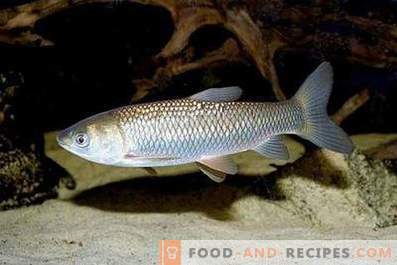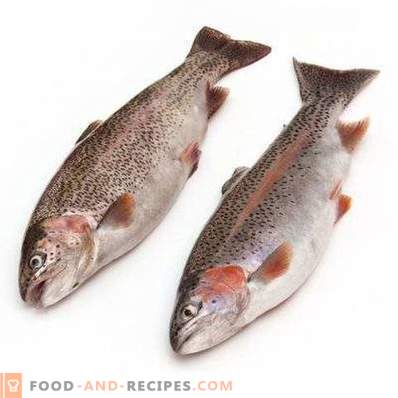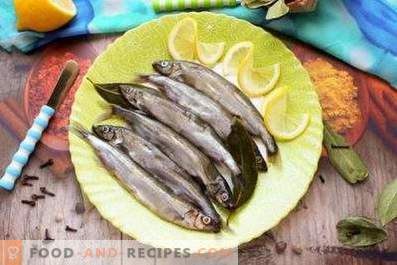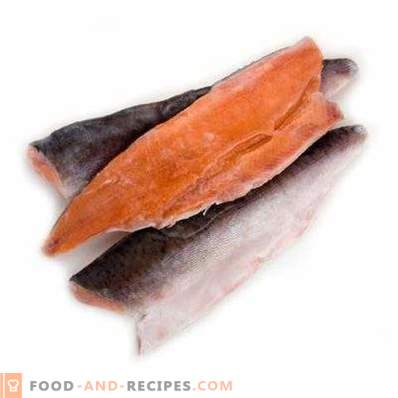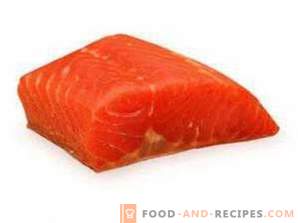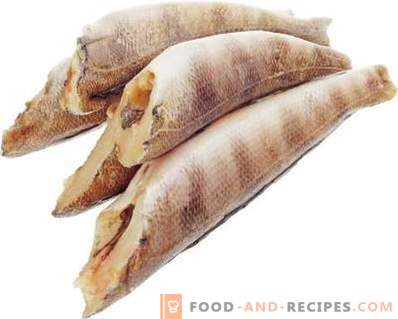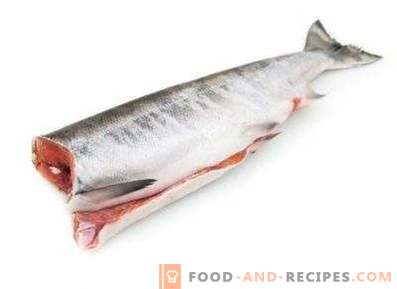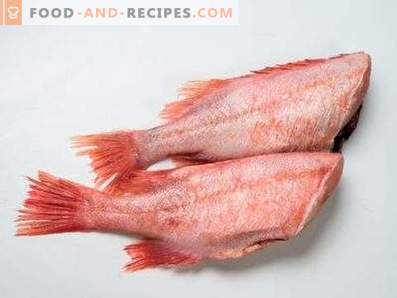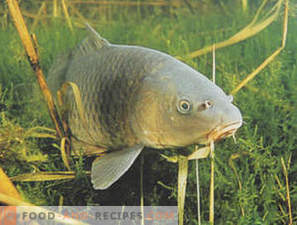
The loaches are large fish of the salmon family. Representatives of this species have an elongated cylindrical body, covered with rare small scales and speckled with diffuse light spots, a large flattened head with a large mouth. The back of the fish is greyish-blue, the sides are silvery, the belly is white. The dorsal fin is gray in color, the anal and abdominal in pink or bright red.
During spawning the loach changes its color. The back of the fish becomes brownish-green, the sides brown with a silver sheen, the belly orange or bright red. At the same time, a lot of pink or orange spots appear on the surface of her body.
The loach forms a number of various intraspecific forms, the most numerous of which are the aisle and lake. Passing individuals can grow up to 88 cm in length and gain weight up to 16 kg. At the same time, lake loaches only occasionally reach a length of 43 cm and a mass of 1, 4 kg.
Habitat habitat
Passing loaches live in the waters ringing the circle of the Arctic Circle. Representatives of this subspecies go to spawn in the rivers of Iceland, Novaya Zemlya, Norway, Spitsbergen, Siberia, Alaska, Greenland and Canada. As for the lake-river intraspecific forms, they live in cold and clean alpine lakes of the Alps and the Kola Peninsula, in the waters of the Baikal basin and in the rivers that flow into Peter the Great Bay. Chars that occur in Pacific waters are distinguished into a separate species, which is called malma.
A char in cooking
The char goes on sale in fresh, frozen, salted and smoked form, in the form of fillets and steaks. Carcasses of this fish are boiled, steamed, baked, stewed and fried, used to prepare rich soup and juicy fillings for pies. In addition, from the char prepared excellent fish salads, cold appetizers.
Nutritional value of char and vitamins in its composition
Nutritional value 100 g loach:
- 21, 046 g of proteins;
- 5, 479 g of fat;
- 72, 674 g of water;
- 1, 094 g of ash;
- 59, 829 g of cholesterol;
- 0, 904 g of saturated fatty acids.
Vitamins in the composition of the char (in a portion weighing 100 g):
- B5, pantothenic acid - 0, 746 mg;
- A, retinol equivalent - 35, 447 μg;
- B4, choline - 64, 702 mg;
- B12, cobalamins - 0, 974 mcg;
- PP, niacin equivalent - 2, 916 mg;
- K, phylloquinone - 0, 098 mkg;
- B9, folic acid - 14, 983 μg;
- E, tocopherol equivalent - 0, 179 mg;
- B2, riboflavin - 0, 116 mg;
- B6, pyridoxine - 0, 278 mg;
- B1, thiamine - 0, 137 mg.
Caloric value of char
The energy value of 100 g of raw char is 134, 761 kcal. Dishes prepared on its basis, have a different calorie (based on 100 g):
- Fried char - 194, 307 kcal;
- fish baked in the oven - 133, 122 kcal;
- steamed carcasses - 132, 468 kcal;
- boiled loach - 134, 101 kcal;
- salted fish - 136, 509 kcal;
- braised loach - 133, 212 kcal;
- smoked carcasses - 144, 686 kcal.
Useful elements in the composition of the char
Trace elements in the composition of the char (in 100 g):
- copper - 71, 614 mkg;
- manganese - 0, 066 mg;
- iron - 0, 369 mg;
- selenium - 12, 712 mkg;
- zinc - 0, 987 mg.
Macroelements in the composition of the char (in 100 g):
- sodium — 50, 914 mg;
- potassium - 316, 577 mg;
- phosphorus - 269, 101 mg;
- magnesium - 32, 416 mg;
- Calcium - 25, 662 mg.
Useful properties of the char
- Vitamin E and other substances in the char fillet improve the functioning of the reproductive system. Regular consumption of dishes based on this fish allows you to eliminate inflammation in the organs of the urogenital system, improve the composition of the ejaculate, increase potency.
- The char is a source of animal protein characterized by a balanced amino acid composition. People performing hard physical work or professionally engaged in sports, it is enough to eat 300-400 g of this fish per day in order to meet the body's need for protein.
- As part of the char, there are substances that increase the tone of the gastrointestinal tract, contributing to the production of digestive enzymes, normalizing the work of the stomach and intestines.
- Calcium, which enters the body by eating dishes from char, strengthens bone tissue. People who include this fish in their diets are less likely to suffer from osteoporosis, rickets and other bone diseases, and recover faster from fractures.
- Omega-3 polyunsaturated fatty acids and other compounds present in the char serve to accelerate the elimination of excess cholesterol from the body, strengthen the heart muscle, give the vessels extra strength and elasticity, prevent the formation of blood clots, reduce the risk of developing irregular heart function. vascular and hematopoietic systems.
- The substances contained in the char fillet activate the processes responsible for supplying the brain with oxygen. The inclusion of this fish in the diet at least once a week helps to increase brain activity, helps the body to recover at an accelerated rate after severe mental stress.
- The loach contains a whole spectrum of compounds capable of accelerating the elimination of heavy metals, poisons, and radionuclides from the body.
- The loach is rich in substances capable of maintaining normal blood pressure. People with hypertension are advised to eat at least 100 g of this fish fillet every day.
- Vitamin A, which enters the body by consuming char fillet, improves vision, prevents the development of ophthalmologic diseases, and helps the visual apparatus to recover quickly after exercise.
- The substances contained in the char meat ensure the normal functioning of the immune system. People who consume meals from this fish at least twice a week are more resistant to infectious diseases (including during periods of epidemics).
- Vitamins of group B, omega-3 fats and other useful compounds contained in charred dishes speed up metabolism, normalize the work of the nervous system. Nutritionists advise people suffering from obesity and neurosis, constantly under stress or depressed, to turn their attention to this fish and include it as often as possible in the menu.
- Loach is a natural source of compounds that normalize sleep and prevent the development of somnological disorders.
- In the meat of loach there is a whole complex of compounds responsible for the normal production of hormones and enzymes.
- Loach is rich in antioxidants that slow down the aging of the body and prevent the development of cancer. With daily inclusion in the diet of this fish, the condition and appearance of teeth, hair, nails and skin are significantly improved, the risk of developing dental and dermatological diseases is reduced.
- Regular consumption in food of snacks and dishes from loach avoids the development of beriberi.
Damage to char
- Char is a potential allergen. People suffering from allergies to fish and seafood, should exclude dishes prepared on its basis, from the diet.
- A char caught in wild water can be infected with parasites. Before eating this fish must be thoroughly culinary and heat treated.
- Fried loach has a high energy value. Abuse of this dish can cause overweight.

